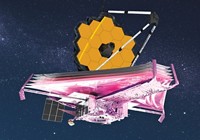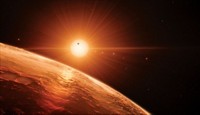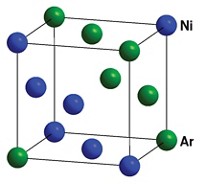Advertisement
Grab your lab coat. Let's get started
Welcome!
Welcome!
Create an account below to get 6 C&EN articles per month, receive newsletters and more - all free.
It seems this is your first time logging in online. Please enter the following information to continue.
As an ACS member you automatically get access to this site. All we need is few more details to create your reading experience.
Not you? Sign in with a different account.
Not you? Sign in with a different account.
ERROR 1
ERROR 1
ERROR 2
ERROR 2
ERROR 2
ERROR 2
ERROR 2
Password and Confirm password must match.
If you have an ACS member number, please enter it here so we can link this account to your membership. (optional)
ERROR 2
ACS values your privacy. By submitting your information, you are gaining access to C&EN and subscribing to our weekly newsletter. We use the information you provide to make your reading experience better, and we will never sell your data to third party members.
Astrochemistry
Superconductors from outer space
Some meteorites contain superconducting alloys
by Neil Savage, special to C&EN
March 25, 2020

For the first time, researchers have confirmed the presence of superconducting materials in meteorites, a result that may have implications for astrophysicists’ understanding of planetary formation. Using a highly sensitive detection technique, and a lot of persistence, researchers found superconducting alloys in two meteorites. The conditions that produced these meteors laced some of them with superconductors, and others may be lurking in outer space waiting to be discovered (Proc. Natl. Acad. Sci. USA 2020, DOI: 10.1073/pnas.1918056117).
Researchers used a highly sensitive technique to examine 16 samples from two different meteorites, one formed in the iron core of an asteroid and one flung off a planet’s surface by a collision. They had reported at a meeting of the American Physical Society in 2018 that there were signs of superconductivity in these bodies, but now they’ve dug into the samples and used multiple techniques to identify which materials are responsible. In both samples, they found small amounts of materials that can become superconducting at about –268 °C, although the meteorites would not naturally reach such temperatures. In one case, the material was an alloy of lead, indium, and tin, and in the other it was indium and tin without lead.
“We were hoping that we’d discover some completely unknown superconducting materials in meteorites, which we did not,” says Ivan Schuller, a physicist at the University of California, San Diego, who led the search for novel superconductors. To his disappointment, both extraterrestrial superconductors are previously-known materials. The processes that formed these meteorites—and the superconductors they carry—included high pressures and high temperatures, very slow cooling at a rate of about 3°C per year over millions of years, and shocks from high-impact collisions. Schuller expected that such extremes might form novel superconductors that earthbound materials scientists had not yet discovered. Still, it was exciting to find superconductors at all in meteors, says Schuller—not least because people told him it was unlikely. “The astronomers said they shouldn’t be there,” he says.
Key to Schuller’s discovery of extraterrestrial superconductors was his development of a technique called magnetic field modulated microwave spectroscopy. He has applied it previously to other meteorites, but this was the first time he hit pay dirt. To look for superconductors, the sample is hit with microwaves while under a small, oscillating, magnetic field. Superconducting materials absorb the microwaves differently than non-superconducting ones, and that causes a measurable change in the magnetic field. The technique is capable of detecting superconducting regions as small as one-trillionth of a cubic centimeter.
Schuller says his team will continue to apply the technique to the search for superconductors in samples both terrestrial and extraterrestrial.
While those processes didn’t create new types of superconductors, it was still gratifying to find any at all, Schuller says.
Similar materials may exist in dust clouds far out in the galaxy, and there are regions of space that are cold enough that they would actually act as superconductors, says Mark Thiemens, a chemist at UCSD and one of the paper’s authors. If there are superconducting particles in such giant clouds, they could be the cause of their magnetic fields, the origins of which are not understood. Thiemens says it might be possible to detect such particles by their absorption or emission spectra. Such a detection may teach astronomers something about star formation.
“It’s a very exciting discovery,” says Rhonda Stroud, head of the nanoscale materials section at the US Naval Research Laboratory. “It adds to the diversity of physics and chemistry that are potentially important for the evolution of dust and gas into habitable planets.”





Join the conversation
Contact the reporter
Submit a Letter to the Editor for publication
Engage with us on Twitter